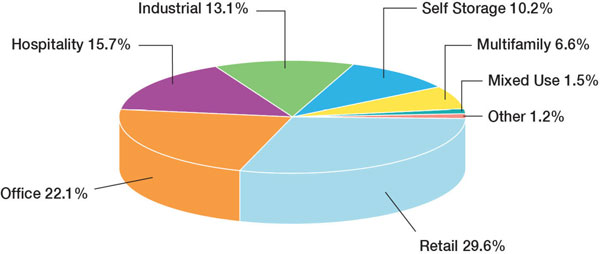As of mid year 01 the long term average self storage cap rate was.
Current cap rates for self storage facilities.
While capitalization rates for the entire self storage sector averaged 8 5 percent to 9 0 percent last year institutional quality assets currently trade in the 6 75 percent to 7 5 percent range.
He recommended using a market cap rate of 7 75 percent unless a property needed a lot of deferred maintenance.
We expect industrial and office cap rates to increase by 10 bps in 2020 and retail to increase by 20 bps.
That being said my experience for self storage cap rates in the mid atlantic states range from a low of 5 for the best properties to 9 0 for properties that are considered higher risk investments.
This is largely due to the increased industry data now available that indicates the overall risk associated with owning self storage is much less than once thought.
The minimal increase in the 10 year treasury yield anticipated for 2020 will help limit cap rate increases and keep the spread about 200 to 300 bps above the risk free rate next year.
Some portfolio sales in this region have sold for less than 5 cap rates.
The national average cost for all unit sizes is 87 89 per month according to sparefoot data.
Multifamily and industrial cap rates tightened the most.
At the time this article was written i consulted an appraiser who said the average cap rate for mom and pop type storage facilities had been around 7 25 percent but was moving toward 8 percent.
In the third quarter of 2018.
Cap rate snapshot.
Because of differences between properties cap rates vary.
Full year 2019 the national average cost per square foot is 0 92 per month.
Commercial real estate assets were broadly unchanged in h1 2019.
The highest pricing in the nation is the northeast region where pricing averages 15 per square foot.
Full year 2019 below is the average national cost by storage unit size.
Percent as compared with a 10 year treasury long term average yield of 3.
Today typical cap rates fall within the range of 6 5 8.
The rate generally reflects the quality of the income property and the level of investment risk for a buyer.
All property types across nearly all classes and segments changed by less than 10 basis points either up or down.
This statistic shows the capitalization rate of self storage investment properties in the united states from the first quarter of 2014 to the third quarter of 2018.
As you can see the market has seen a constant decline in cap rates for self storage properties over the last 10 years from an average of 10 percent in 2000 to 6 25 percent in 2013.

